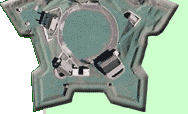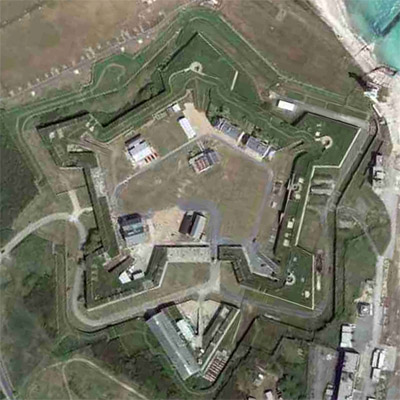
 |
 |
Fort Cumberland Portsmouth, England |
 |
 |
 |
 |
 |
||
 |
Prince William, Duke of Cumberland (1721-1765), was a popular guy in Britain in 1747. The previous year he had led British forces to victory in the last major battle to take place on British soil, the Battle of Culloden (1746). That battle ended the Jacobite Rising (1745), in which Charles Stuart (1721-1765), also known as Bonnie Prince Charlie, tried to unseat the reigning House of Hanover to restore the House of Stuart to the British throne. Having defeated Charlie and then riding around the Scottish Highlands killing lots of people suspected to have supported the Jacobite rising, William returned to England in 1746 and for one reason or another had the authority to pick a spot in Portsmouth to have a star fort built and named after him! Construction on Fort Cumberland began on January 1, 1747. The first Fort Cumberland was pretty much just an earthwork, built at the entrance of Langstone Harbor to protect the harbor from whomever might wish it ill, and was completed in 1785. A few brick buildings were constructed inside the fort, some of which carried over into Fort Cumberland's second iteration, built of masonry from 1785 to 1812. In 1859 Fort Cumberland became the headquarters of the Royal Marine Artillery, and changes were made in 1860-61 to accomodate new, rifled cannon. Changes were also made in the fort's bastions between 1886 and 1892 to make way for Moncrieff Disappearing Guns, a form of artillery designed in the 1860's by Crimean War (1853-1856) veteran Captain Alexander Moncrieff to pop entertainingly from behind cover to fire and then pop back down to be reloaded. Fun! The Royal Marines continued to use Fort Cumberland for a variety of purposes. During the Second World War (1939-1945) the fort was being used as an overflow base for Marines who couldn't be crammed into their barracks a mile to the west, when on August 26 1940 the Luftwaffe dropped 78 bombs on the fort. Only one of the bombs landed on anyone, or more accurately eight someones. A memorial plaque was placed on that spot to honor the men who died in the air raid, cleverly erected on a concrete pillar at a gate, so that it could be struck by passing military vehicles on a regular basis. In 1964 Fort Cumberland was named an Ancient Monument. In 1971 the Royal Marines left the fort after over 140 years of active use. In 1975 Fort Cumberland came under the authority of English Heritage, a governmental organization for the management of Britain's historic structures. Today the fort is Great Britain's Center for Archaeology, and is available for pre-booked tours. |
 |
 |
||
|
|
|||||||
Info Source 1
Info Source 2
Info Source 3
Info Source 4 Info Source 5 Info Source 6 Info Source 7 Info Source 8 Info Source 9 Info Source 10 Thanks to Google Maps for the image! ©2010 starforts.com |
 |